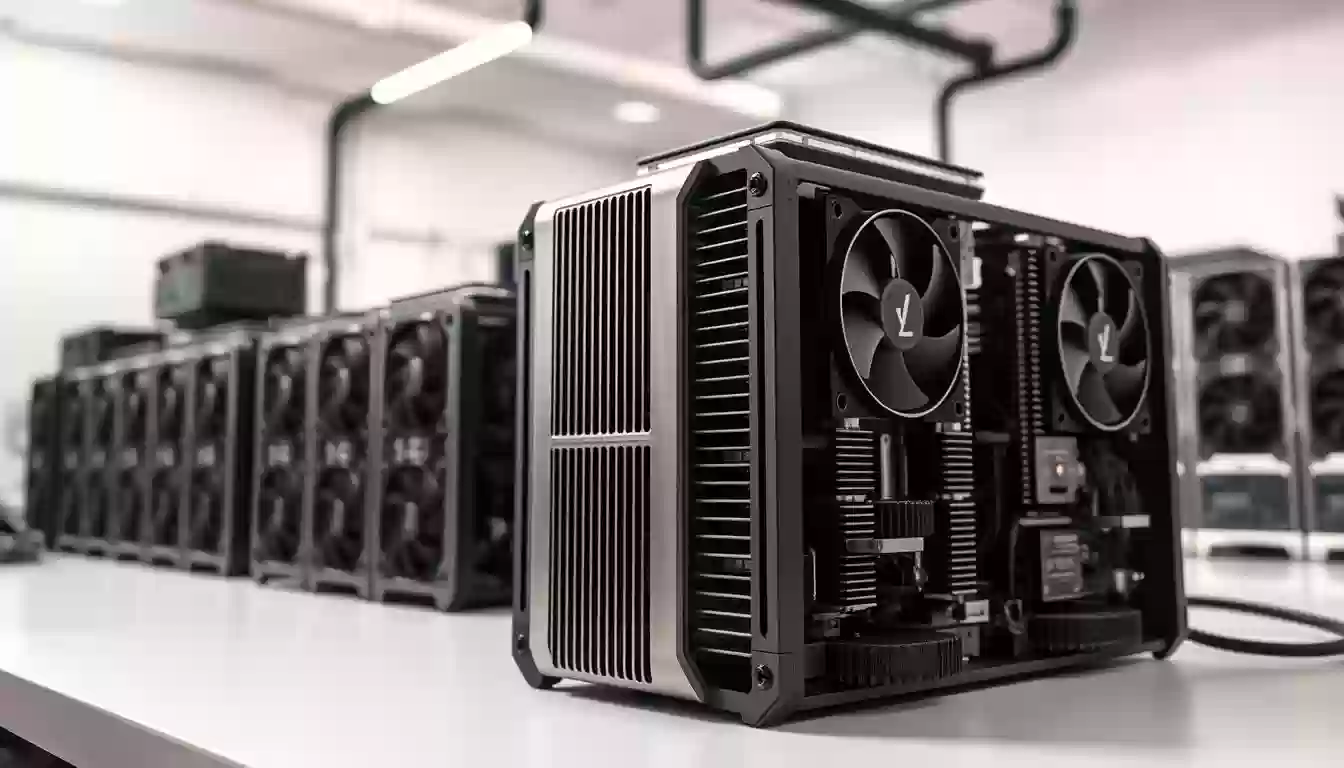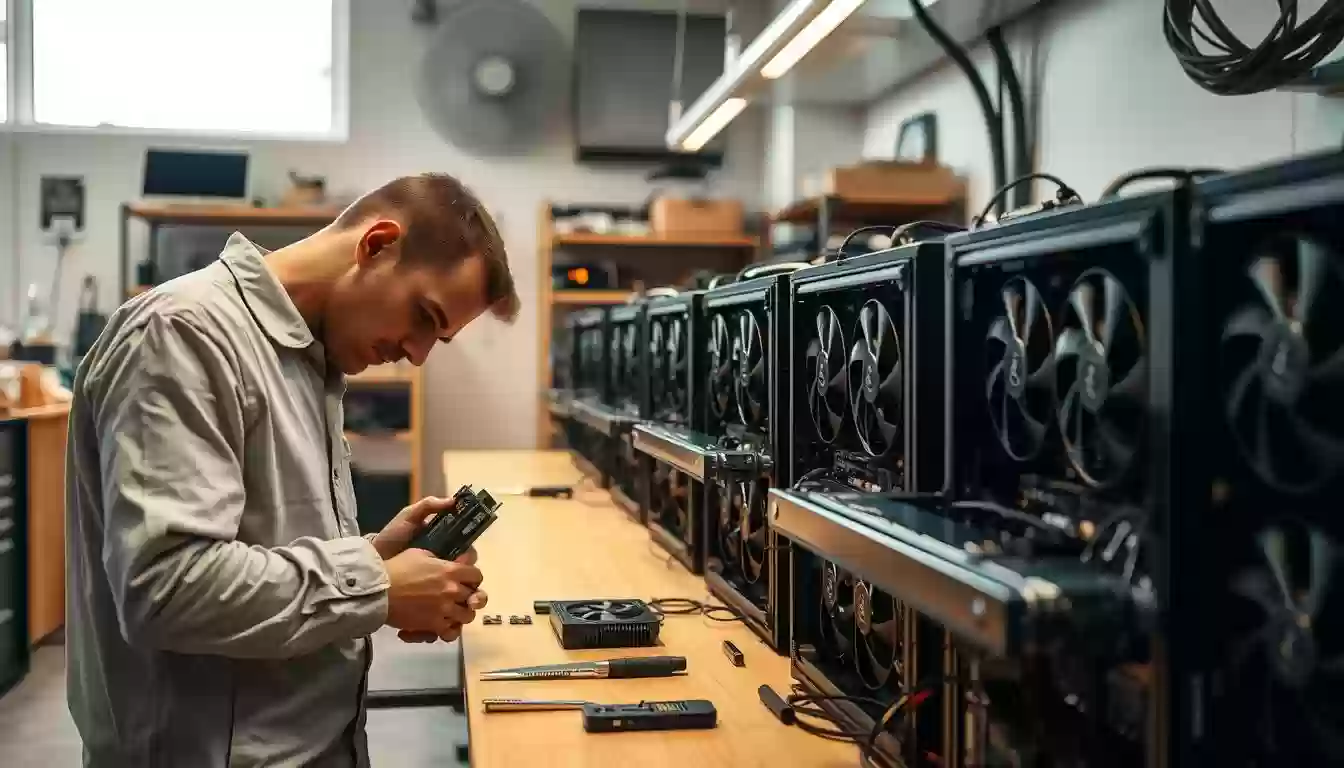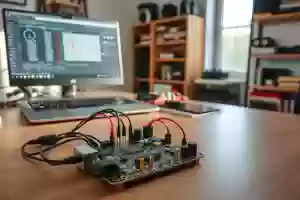Optimizing Mining Performance: Best Practices
 07 Mar 25
07 Mar 25
In the fast-evolving world of crypto mining, maintaining peak mining performance is crucial for maximizing profitability. As more miners join the network, the competition intensifies, making it essential to stay ahead with efficient strategies. Whether you're a seasoned miner or just starting out, understanding how to enhance your mining operation can significantly impact your bottom line.
ASIC miner optimization is a multifaceted field that combines technical expertise with meticulous maintenance routines. By focusing on hardware efficiency and smart power management, miners can achieve a higher hash rate while keeping power consumption in check. This delicate balance is key to sustaining profitability in an ever-changing market.
In this article, we'll delve into proven best practices, including hardware tweaks, firmware updates, and advanced cooling systems. We'll explore how these strategies can enhance your mining efficiency and reduce operational costs. By implementing these approaches, you'll be better equipped to navigate the challenges of crypto mining and stay competitive in the long run.
Understanding the Fundamentals of Mining Optimization
At the heart of every successful crypto mining operation lies a deep understanding of the hardware that powers it. ASIC (Application-Specific Integrated Circuit) miners are the backbone of modern mining, designed specifically for this purpose. Unlike traditional CPUs or GPUs, ASIC miners are built for one task: to solve complex mathematical equations quickly and efficiently.
ASIC Miner Basics and Components
ASIC miners are made up of several key components. The most important are the specialized ASIC chips, which are responsible for performing the heavy computational work. These chips are far more efficient than CPUs or GPUs because they are designed specifically for mining. Other essential parts include the control board, which manages the miner's operations, and the power supply unit (PSU), which provides the necessary power to run the device efficiently.
How Mining Hardware Impacts Efficiency
The design and quality of your mining hardware play a crucial role in determining your overall efficiency. A well-designed miner with high-quality components will not only increase your hash rate but also help reduce power consumption. This balance is key to maintaining profitability, especially as electricity costs continue to rise. Additionally, proper cooling systems are essential to prevent overheating, which can degrade your hardware and reduce its lifespan.
Expert Techniques for Optimizing Mining Performance
For those looking to take their mining operation to the next level, advanced strategies can make a significant difference. These techniques not only improve hardware efficiency but also ensure a smoother, more profitable mining experience.
Firmware Updates and Software Tweaks
Regular firmware updates are essential for maintaining peak performance and security. By updating your mining software, you can access new features that boost efficiency and patch potential vulnerabilities. These updates often include optimizations that enhance hash rates while reducing power consumption, making your mining hardware more efficient overall.
Overclocking and Undervolting for Increased Yield
Overclocking involves increasing your miner's clock speeds to achieve higher hash rates, potentially increasing your rewards. However, this method requires careful monitoring to avoid overheating. Undervolting, on the other hand, reduces power consumption without significantly impacting performance, making it a great way to lower operational costs.
| Technique | Benefits | Considerations |
|---|---|---|
| Overclocking | Increases hash rate and potential rewards | Risk of overheating and reduced hardware lifespan |
| Undervolting | Lowers power consumption and operational costs | May require adjustments to maintain performance |
These advanced techniques offer powerful ways to enhance your mining setup. By balancing speed and efficiency, you can maximize your output while keeping costs under control.
Mining Hardware Maintenance and Cooling Strategies
Maintaining your mining hardware is essential for ensuring longevity and efficiency. Regular upkeep can prevent issues that might arise from dust buildup and overheating.
Regular Cleaning and Dust Prevention
Dust is a silent enemy of mining equipment. It can block airflow, causing your hardware to overheat. To prevent this, clean your miners regularly using compressed air or a soft brush. This simple step can significantly improve airflow and keep your system running smoothly.
Implementing Effective Cooling Systems
Cooling is crucial for maintaining optimal operating temperatures. Air-based cooling systems with high-quality fans are a cost-effective solution. For more demanding setups, liquid cooling offers superior heat dissipation, prolonging hardware life and reducing power consumption. Proper setup and environmental control are key to sustaining performance and efficiency.

Regular maintenance and effective cooling strategies not only protect your investment but also ensure consistent mining efficiency, helping you stay competitive in the crypto mining landscape.
Advanced Optimization Methods and Autotuning
Taking your mining operation to the next level involves exploring advanced strategies that refine hardware performance and energy use. Autotuning emerges as a cutting-edge approach, offering real-time adjustments to ASIC settings for enhanced efficiency and output.
Benefits and Risks of Autotuning
Autotuning dynamically optimizes ASIC settings, boosting hash rates and energy savings while extending hardware lifespan. However, it's not without risks. Misconfigurations can lead to system instability, and modifying settings may void warranties. It's crucial to source trusted firmware and software to mitigate these risks.
Customized ASIC Settings for Peak Performance
Customizing ASIC settings can unlock peak performance. For instance, adjusting voltage and frequency can balance speed and efficiency. While manual tweaks are effective, autotuning offers a hands-off solution, automatically adapting to conditions for consistent results. This approach is particularly beneficial for large-scale operations seeking stability and efficiency.
By embracing autotuning and tailored ASIC settings, miners can achieve higher efficiency and profitability, ensuring their operations remain competitive in the crypto mining landscape.
Efficient Power and System Management Strategies
Managing power effectively is crucial for maintaining a profitable crypto mining operation. By implementing smart strategies, miners can reduce energy consumption without compromising output. This section explores practical approaches to enhance efficiency and monitor performance in real-time.
Reducing Power Consumption Without Sacrificing Output
One effective way to cut energy costs is by using low-power modes and upgrading to efficient power supply units (PSUs). These adjustments ensure your hardware runs smoothly while drawing less power. Additionally, optimizing system settings can balance performance with energy savings, helping you maintain productivity without extra costs.
Monitoring Tools for Real-Time Performance
Utilizing monitoring software provides insights into your system's energy use and temperature. These tools help identify inefficiencies, allowing you to make timely adjustments. Regular checks ensure your setup runs optimally, preventing overheating and extending hardware lifespan.
| Strategy | Benefits | Considerations |
|---|---|---|
| Low-Power Modes | Lowers energy use, reduces costs | May require adjustments to maintain output |
| Efficient PSUs | Stable power delivery, less waste | Higher initial investment |

By combining efficient hardware and real-time monitoring, miners can achieve a balance between power savings and productivity, ensuring a competitive edge in the crypto mining landscape.
Selecting the Right Mining Pools for Enhanced Profitability
Joining a mining pool can significantly boost your mining rewards by providing steady payouts. Mining pools work by combining the computational resources of multiple miners, increasing the chances of solving complex mathematical equations and earning block rewards. This collaborative approach reduces variance and offers more consistent income compared to solo mining.
Evaluating Pool Size and Fee Structures
When selecting a mining pool, it's essential to consider both the pool's size and its fee structure. Larger pools generally offer more frequent payouts due to their greater combined hash rate, but they often charge higher fees. For example, a pool with 1% of the network's hash power might charge a 1-3% fee, which directly impacts your profitability. It's crucial to compare fee structures across pools to find a balance between payout frequency and cost.
Impact of Payout Structures on Mining Rewards
Payout structures vary among mining pools, with common methods including Pay-Per-Share (PPS) and Pay-Per-Last-N-Shares (PPLNS). PPS offers fixed payouts per valid share, providing predictable income, while PPLNS rewards miners based on contributions over a specific timeframe, which can lead to higher payouts for consistent contributors. Understanding these structures helps miners choose a pool that aligns with their operational goals and system setup.
Selecting the right mining pool is a strategic decision that can significantly influence your profitability. By evaluating factors such as pool size, fee structures, and payout methods, miners can make informed choices that enhance their overall mining efficiency and rewards. Data-backed insights from industry trends support these best practices, ensuring miners stay competitive in the ever-evolving crypto mining landscape.
Conclusion
In the dynamic landscape of cryptocurrency, achieving peak efficiency is the cornerstone of a successful mining operation. By combining technical expertise with routine system maintenance and smart power management, miners can unlock significant improvements in their operations.
Continuous optimization is key to sustaining profitability. From firmware updates to advanced techniques like autotuning, these strategies ensure your hardware operates at its best while managing energy use effectively. Understanding both the fundamentals of your mining hardware and advanced strategies is crucial for achieving efficient results.
By implementing best practices, miners can enjoy dual benefits: enhanced performance and reduced costs. This balanced approach not only boosts profitability but also ensures the longevity of your equipment. For those interested in deeper insights, exploring resources like crypto mining optimization techniques can provide valuable guidance.
Stay proactive and adaptable in this ever-evolving field. With clear strategies and a commitment to learning, miners can navigate the complexities of cryptocurrency mining and secure long-term success.
FAQ
What is ASIC mining and how does it improve mining efficiency?
ASIC (Application-Specific Integrated Circuit) mining uses specialized hardware designed solely for crypto mining. These devices significantly boost hash rates and reduce power consumption, making them far more efficient than general-purpose hardware.
How can I reduce my mining operation's power consumption?
To lower power consumption, consider using energy-efficient ASIC miners, optimizing your cooling systems, and ensuring your setup runs at optimal hash rates. Additionally, monitoring your power usage with specialized tools can help identify inefficiencies.
What factors affect the profitability of a mining operation?
Profitability depends on several key factors, including hash rate, power consumption, hardware efficiency, and the current block reward. External factors like crypto market trends and mining difficulty also play a significant role in determining profitability.
How does cooling impact mining hardware performance?
Proper cooling is essential to maintain hardware efficiency and prevent overheating, which can damage equipment. An effective cooling system ensures consistent hash rates and prolongs the lifespan of your mining hardware.
What is the importance of firmware updates for mining equipment?
Firmware updates enhance hardware efficiency, improve hash rates, and often include optimization features to reduce power consumption. Regular updates are crucial for maintaining peak mining performance and ensuring compatibility with the latest mining software.
How can I monitor and improve my mining operation's performance?
Utilize monitoring tools to track key metrics such as hash rate, power consumption, and hardware temperature. These tools provide real-time insights, allowing you to make data-driven adjustments to optimize your mining operation.
What is the role of mining pools in increasing profitability?
Joining a mining pool allows you to combine computational resources with other miners, increasing the likelihood of solving blocks and earning block rewards. Pools often offer payout structures that can stabilize income and enhance overall mining efficiency.
How can I ensure my mining setup is cost-effective?
Focus on hardware efficiency, power consumption, and optimization strategies. Investing in ASIC miners and implementing cooling systems can significantly reduce costs. Additionally, regularly assessing your mining operation for potential improvements ensures long-term cost-effectiveness.





























